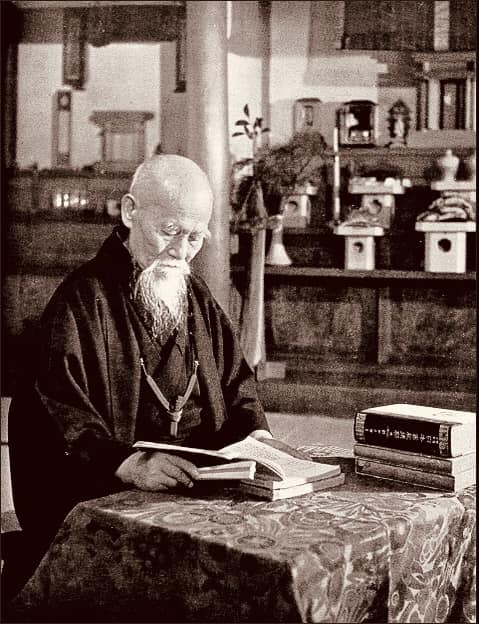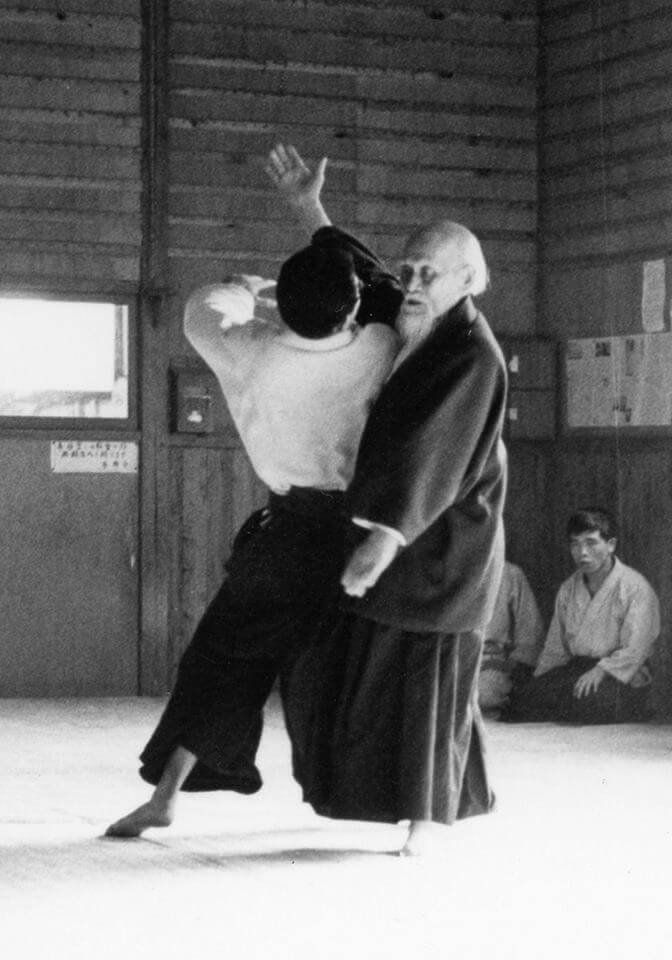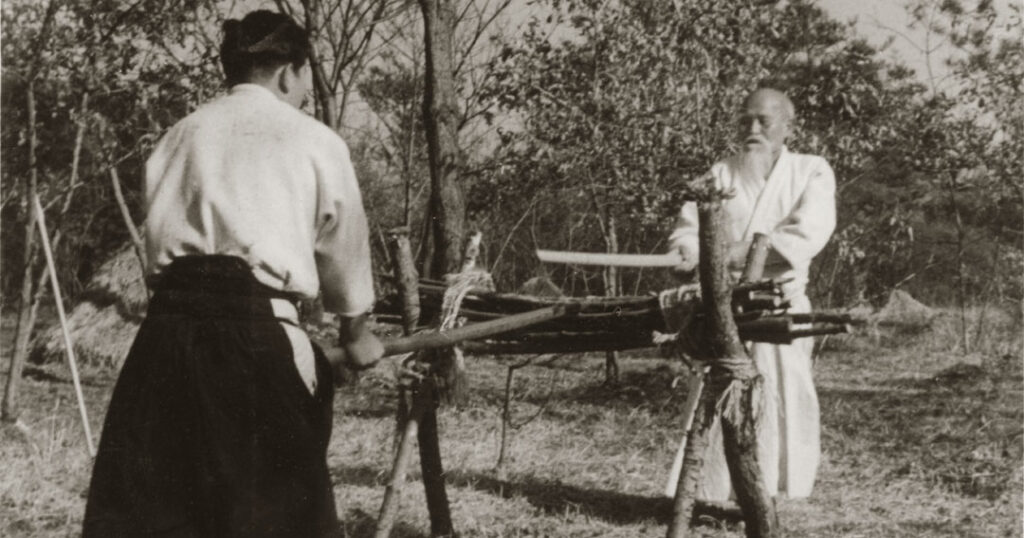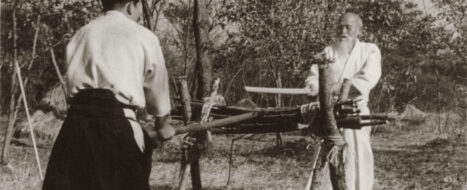Introduction
Over the three decades that I’ve practiced Aikido, I’ve run into the assertion that Aikido has no “form” on several occasions. I’ve seen this in online posts, and I’ve had discussion with several people that hold the view that the technical aspects of Aikido are secondary to development of more internal aspects of the art. These assertions are often supported by quotes from O-Sensei. The quotes are usually presented out of context and are also often sourced from translations that are known to be either biased or of poor quality.
I disagree with this viewpoint. Aikido certainly does have “form” and it is my understanding that O-Sensei taught technique. It is widely understood that he taught very traditionally with the expectation that students would “steal” his technique. I believe these out of context quotes refer to the end goal of Aikido study. I also believe that development of martially effective Aikido, through attention to fundamentals and technical aspects of the art, is an essential part of the path to the end goal.

Preservation of Technique?
If Aikido really has no form, then it would seem difficult to understand how nearly all of the core techniques have retained similarity across so many styles of Aikido. I try to attend a local annual cross-style Aikido seminar every year. I also spent many years practicing Aikido in the Washington DC area where I attended countless seminars that represented nearly ever major style of Aikido, ranging from Shin-Shin Toitsu Aikido (I practiced Ki-Aikido for the first five years of my Aikido career) to Yoshinkan Aikido. Based on this experience, the stylistic similarities between specific techniques are almost always much greater than the differences.
My personal experience with training across styles includes training in Shodokan Aikido (Kenji Tomiki Sensei – 1920s), Ki-Aikido (Koichi Tohei Sensei – 1930s), Yoshinkan Aikido (Gozo Shioda Sensei – 1930s), Iwama Style Aikido (Morihiro Saito Sensei – 1940s), the Aikido of Kazuo Chiba Sensei (1950s), Yoshimitsu Yamada Sensei (1950s), Shizuo Imaizumi Sensei (1960s), and Mitsugi Saotome Sensei (1960s). If Aikido has no form, and by assertion, O-Sensei didn’t really believe the technical aspects of Aikido were relevant, how did the basic structure of so many techniques survive over 40 years of transmission to so many direct disciples?
Why are Core Technical Details Preserved Across Styles?
Between the styles listed above there are significant stylistic differences and there are non-trivial differences in pedagogy. This being the case, when we examine a technique like Shihonage, for example, the technique has the same core form across all the styles. I do not believe that Aikido is “without form” and I believe the evidence that O-Sensei believed that the path to understanding Aikido is through correct practice is clearly evident in the legacy he left behind. An art without form could not maintain such consistent technical detail across so many students over more than 4 decades. There is also more direct evidence that this is the case. O-Sensei himself, when asked in 1957 how many techniques there were in the Aikido curriculum, had this to say:
There are about 3,000 basic techniques, and each one of them has 16 variations… so there are many thousands. Depending on the situation, you create new ones.
“Aikido”, Kisshomaru Ueshiba, Tokyo, Kowado (1957), pp 198-219. Translation from Japanese by Stanley Pranin and Katsuaki Terasawa
The above quote is documented in a book authored by Nidai Doshu Kisshomaru Ueshiba. Given the translators, it seems likely that the translation is accurate.

What did O-Sensei Really Mean?
I believe the quote above is a pretty fair indication that O-Sensei considered Aikido to have “form”. Based on my understanding of Iwama Aikido pedagogy, O-Sensei expected an evolution of study that starts with “Kitai” (strong) forms and ends with “Takemusu Aikido” (“Yawarakai” and “Ki No Nagare” practice are intermediate stages). Kitai describes static practice that adheres to specific Kihon (fundamental) forms of technique. Takemusu Aikido is the state where an Aikidoka is experienced enough to create and use effective technique spontaneously. It is my personal experience that there is quite a bit of distance between these two endpoints. Personally, if I ever manage to achieve it, I’m still many years away from “Takemusu Aikido”.
How do we reconcile O-Sensei’s quotes about Aikido having “no form”? I believe that when O-Sensei talked about Aikido having “no form”, he was talking about HIS Aikido, which arguably represents the end state of Aikido study. I don’t believe he was directing teachers and students to abandon form as part of training. In fact, there is significant evidence to indicate that the opposite is true.
Japanese Pedagogy
A pedagogy that focuses on deep study of form, by direct transmission from a qualified teacher, followed by transcendence of form after mastery of the art is consistent with the study of traditional Japanese arts. In traditional study, students spend much of their time learning fundamentals. This process can take many years of apprenticeship. Learning forms is a necessary part of the path to mastering the art. Once an art is mastered, form can then be abandoned in practice. Abandoning form doesn’t, in any way, imply that form is no longer taught, or that form has become unnecessary. This process insures that form, as a vehicle for transmission, is carried forward to the next generation of students, effectively preserving the art.
Recently, I’ve seen form referred to as “dogma”, and I’ve seen people rail against “form” as if it’s “establishment”, and therefore a bad thing. This is a very Western attitude, and in my opinion this kind of attitude represents little more than hubris. Students can’t just “skip to the last chapter” with an expectation of understanding. This is as true for Aikido as it is for any other complex pursuit. Fundamentals and form are very important, and even very senior students, including teachers, should be continually revisiting fundamentals on a regular basis. Aikido CANNOT be studied effectively from books and videos. An active relationship with a qualified teacher is an absolute requirement for understanding the Art of Aikido.
Morihiro Saito Sensei’s Experience

I’m not an Aikido historian. I’m a Dojo-Cho. I never spent time on the mat with O-Sensei. I was a bit over two years old when O-Sensei passed away. However, my teacher’s teacher, Morihiro Saito Shihan, did spend time with O-Sensei. Morihiro Saito Sensei spent more than 23 years studying directly with O-Sensei as uchideshi. It’s well documented that no one spent more time studying Aikido with O-Sensei, than Saito Sensei did. Saito Sensei, on more than one occasion, has described how O-Sensei taught at Iwama.
O-Sensei would say: “That’s not the way. Every little detail should be correct. Otherwise, it isn’t a technique. See, like this… like that!” I was very lucky O-Sensei taught me thoroughly in detail, and I’m following his example.
Morihiro Saito Shihan
Conclusion
Aikido does have well-defined “form”. It is a martial art. Aikido is Budo. It is not “interpretive self-expression”, nor is it some kind of Yoga or T’ai Chi variant. The “forms” of Aikido, including both taijutsu and weapons, are an indispensible part of the path to realizing the benefits of Aikido. People come to the mat for many different reasons and everyone is welcome to practice, or teach, whatever they like. I reserve the right, however, to contest opinions that are inconsistent with actual history.
Our dojo’s mission is focused on preservation of the Aikido that Morihiro Saito Sensei left behind. We teach under the well documented assumption that this is the Aikido that O-Sensei taught at the Iwama Dojo. We also strive to teach using the same approach that Saito Sensei used. Aikido is more than just a martial art. The benefits of Aikido are realized through correct practice. If you’d like to make the commitment to study Aikido with us, we welcome all sincere students! We are the only Colorado Springs Aikido Dojo that teaches Traditional Aikido. Both new and experienced students are always welcome!


